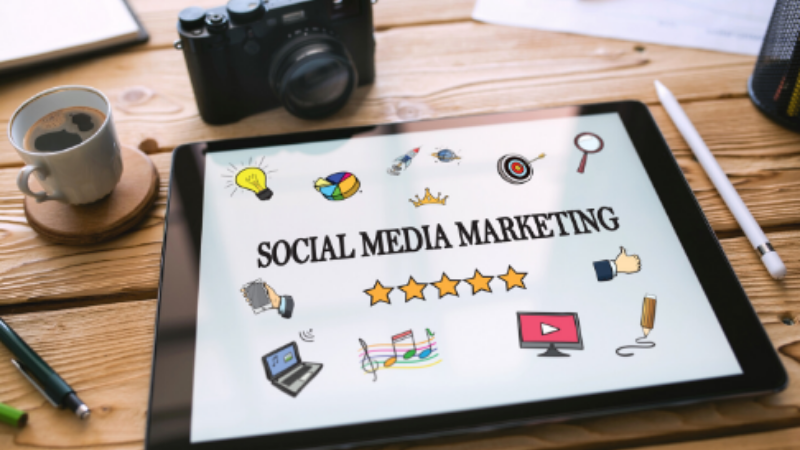
SHARE
READ & LEAVE A COMMENT

Remember when “disruption” was just another marketing-buzzword of 2019? Well it certainly has a whole new meaning now! Last year it was about the battle of innovation and competition between different companies, but this time it’s the entire world disrupted by the COVID-19 pandemic.
This disruption has all of us spending more and more time consuming online content, especially on social media. Whether you’re working-from-home, looking at quarantine recipes, hanging out with your friends on Zoom, or just generally surfing, it’s all happening online. Since everything is moving digital, the Social Media Marketing world has also experienced massive changes in the last two months.
It may sound dramatic to say, “forget the social strategy you created for 2020” but I guess that’s our reality now! Audience behavior has and will continue to change dramatically, resulting in brands facing new challenges throughout the year. My goal here is to help marketers understand the big changes, and offer possible workarounds to stay relevant.
Change 1: No Surprise Here: User Activity Is Higher Than Ever!
(Especially those Instagram LIVE sessions!) But here’s the catch – although your audience is spending more time on social networks, research shows they are mostly interested in COVID-19 related news. Additionally, all the major social media platforms have partnered with leading health experts and organizations to bring COVID-19 news to appear more predominantly in user feeds. So, the question for marketers is, how do you get your audience to engage with your content and ensure your efforts aren’t buried under the COVID updates?

Workaround: Quality, not quantity. While it may be enticing to double up on your frequency to get more eyeballs, a recent study by RivalIQ noted that less posting leads to higher engagement rates. Why? “When a company posts less frequently, each post they create has a better chance of earning impressions and engagement, which in turn yields higher per-post performance. The second reason has to do with the quality of posts. When marketers focus their energy on a few great posts instead of many mediocre ones, fans and followers naturally engage more. This natural engagement increase encourages social channels to re-serve that content to other users, leading to higher engagement.”
Change 2) Seeming Insensitive
This outbreak has affected all of us, but in different ways. Some marketers choose a “tell-it-like-it-is” approach, while others lean on humor and distraction as a coping mechanism to give their audience a refreshing change from the news. There is no one-size-fits-all approach here, but it could be that the people who were receptive to your promotion techniques yesterday simply have other pressing priorities today. Recent eMarketer data suggests businesses are struggling with seeming insensitive towards their audiences. Basically, when it comes to social content during this pandemic, all bets are off.
Workaround(s):
Change 3) A Whole New Pool Of “Trending Topics”

Four months ago, you came across a lot of material around chatbots, voice-search, and vertical video. However, popular topics now are perspectives on remote working, social distancing, crisis management, business continuity, online learning, collaboration, building better routines and productivity. (LinkedIn Learning, 2020) This means working with new search habits, and consumer demands.
Workaround(s): The name of the game is flexibility. Understand the need of the hour, and as much as possible, create content based on demand and data.
Change 4) The Rise of Virtual Event Marketing

Physical conferences have now become virtual webinars. Although virtual events aren’t new, a big change for marketers now is (quickly) learning how to successfully promote events where you can’t highlight the fancy location or the food service, instead focus on marketing the value of the “at-home” value of it! Social media marketing plays a critical role in increasing event registrations, hosting the event itself, collecting feedback and ultimately, generating leads.
Workaround(s)
Change 5) Facebook Ads Are Cheaper
Facebook’s first quarter 2020 financial report shows a significant reduction in the demand for advertising, making the ads cheaper. Although cost-per-mille (CPM) & cost-per-click (CPC) have decreased, Facebook also advised that conversions and click-through-rate (CTR) are low as well. So while it’s cheaper to reach your target audience and more people might see your ads these days, they might not be in the best position to act upon it.
Workaround(s)


Companies and brands that adjust not only because of the pandemic, but because they truly want to support their consumers will be the ones coming out of this with stronger customer-relationships and brand loyalty that will pay off in the long run. Having a consumer-centric mindset and practicing the agile methodology, you’re better positioned to ride out this crisis and be prepared for whatever comes next. Don’t use social media to show off your business capabilities, but to show up for your customers. It’s all in the mindset.
About Charu Misra
Charu is a Digital Marketing Consultant, currently based in Manila, Philippines. Holding a Bachelor of Science (B.S.) degree in Advertising & Marketing Communications. Her professional career originated in New York City where she specialized in Content and Social Media Marketing. Visit her online on Twitter and LinkedIn.
SHARE
READ & LEAVE A COMMENT